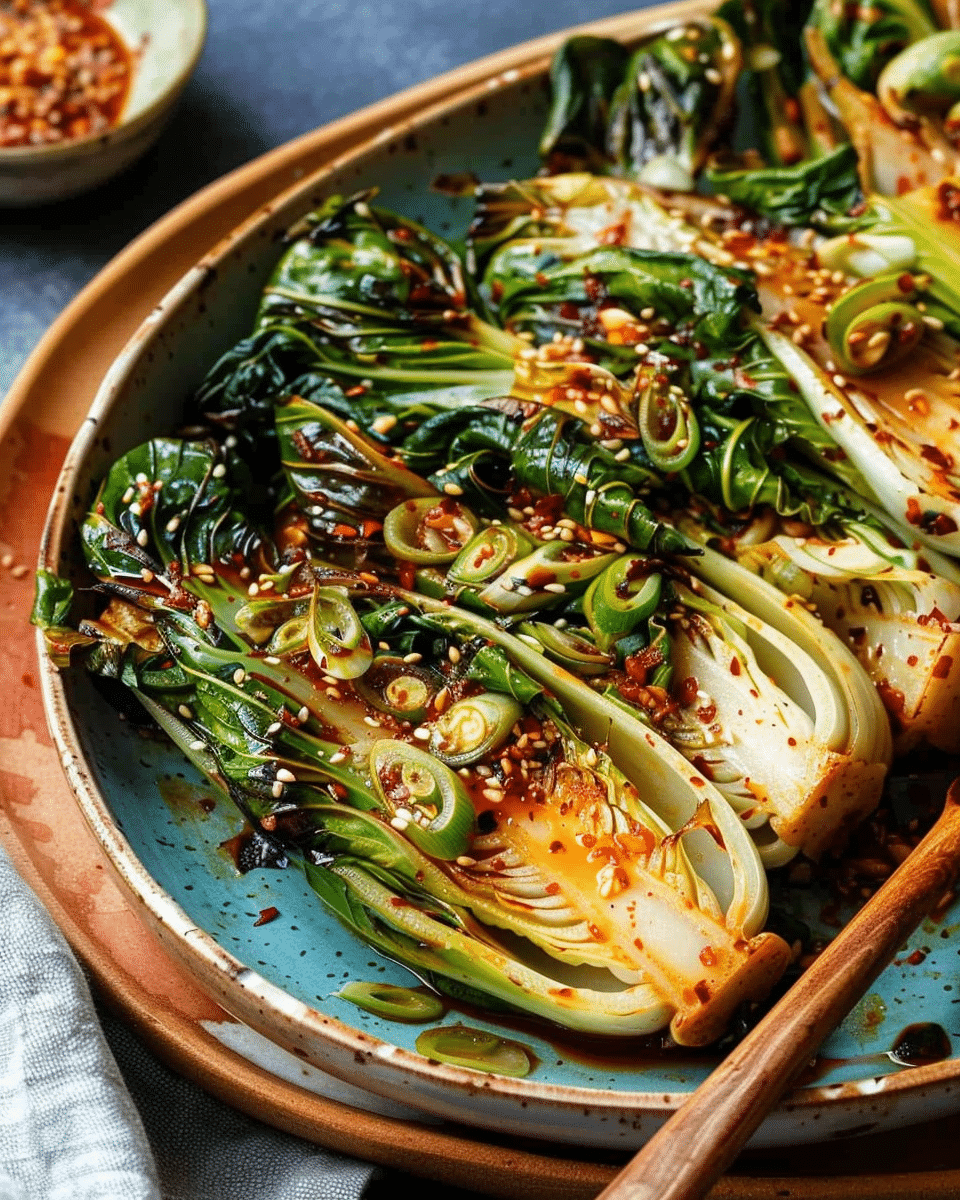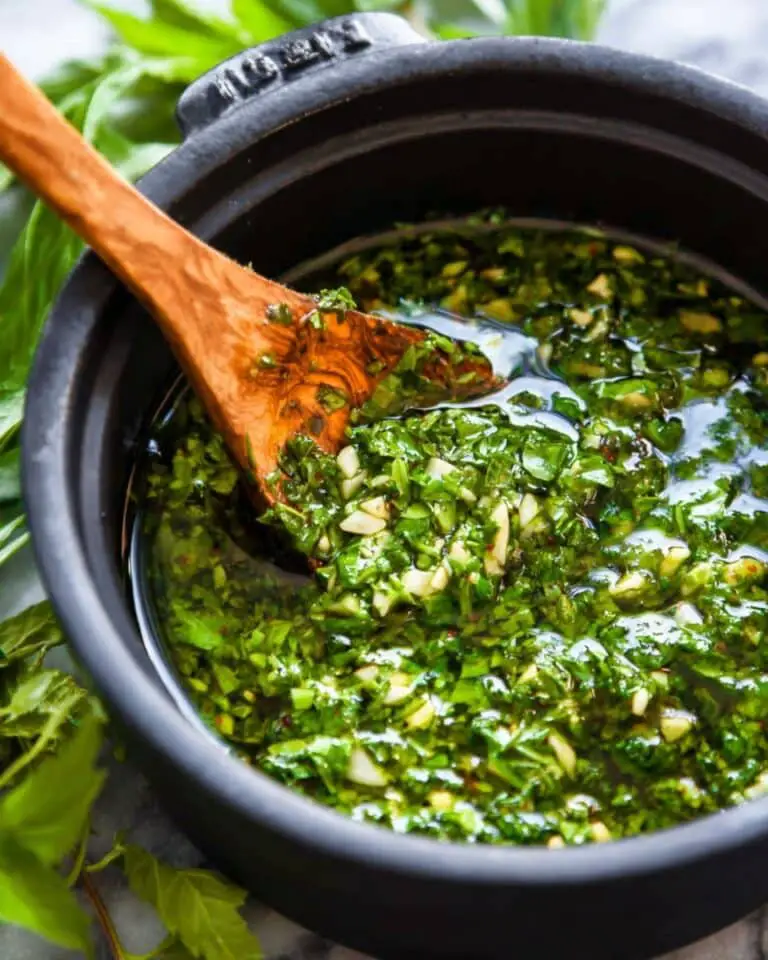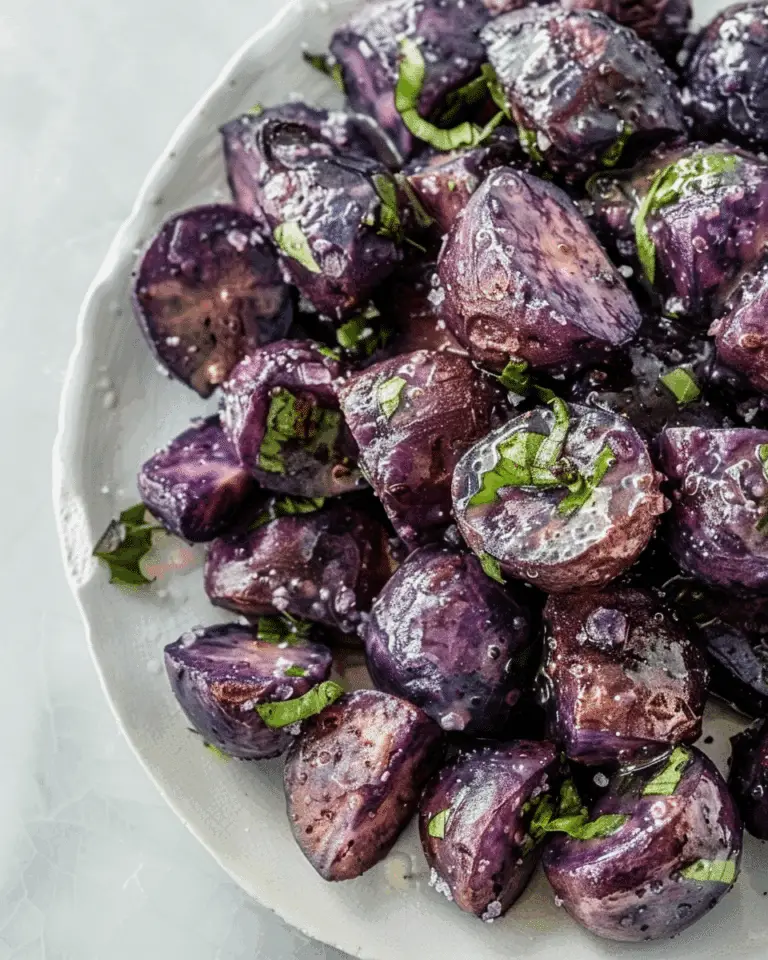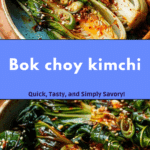
Why You’ll Love This Recipe
This Bok Choy Kimchi is a great way to enjoy the health benefits of fermented foods while exploring a new variation of the classic kimchi recipe. The baby bok choy provides a crunchy, refreshing texture, while the gochugaru and fish sauce give it that signature kimchi heat and umami. The sauce is both rich and vibrant, with a perfect balance of spice, sweetness, and tang. It’s simple to make, and it only gets better with time as the flavors develop. Whether you’re new to kimchi or a seasoned fan, this version with bok choy is a must-try.
Ingredients
- 1 lb baby bok choy
- 1 oz red onion (quarter of 1 small, optional)
- 2 bulbs spring onions
For the sauce:
- 0.4 oz garlic cloves (2 large, grated)
- 0.1 oz ginger (a tiny small knob, grated)
- 1.5 tbsp coconut aminos
- 1 tsp coarse sea salt
- 0.5 tbsp fish sauce
- 1.5 tbsp gochugaru (Korean red pepper flakes)
- 1 tbsp maple syrup
- 2 tsp apple cider vinegar
For the garnish:
- Toasted rice sesame seeds
- Toasted sesame oil (to taste)
(Tip: You’ll find the full list of ingredients and measurements in the recipe card below.)
Directions
- Prepare the Bok Choy: Wash the baby bok choy thoroughly and trim off the tough ends of the stems. If the bok choy is large, you can cut it into smaller, bite-sized pieces.
- Make the Sauce: In a small bowl, combine the grated garlic, grated ginger, coconut aminos, coarse sea salt, fish sauce, gochugaru, maple syrup, and apple cider vinegar. Stir the mixture until well combined and the salt dissolves. The sauce should be thick and aromatic.
- Mix the Bok Choy: In a large bowl, add the chopped bok choy, red onion (if using), and spring onions. Pour the kimchi sauce over the vegetables and toss everything together, making sure the bok choy is well coated with the sauce. You may want to use gloves to avoid staining your hands with the gochugaru.
- Massage the Vegetables: Gently massage the sauce into the bok choy for a couple of minutes to help the flavors soak in and to slightly wilt the bok choy.
- Ferment: Transfer the bok choy mixture into a clean jar or airtight container. Press the mixture down to remove air pockets and ensure the bok choy is submerged in the sauce. Leave some room at the top for expansion during fermentation.
- Let it Ferment: Leave the jar at room temperature for about 1-2 days to ferment. After the initial fermentation, refrigerate the kimchi. It will continue to develop flavor as it sits, becoming more tangy over time.
- Serve: When ready to serve, garnish the kimchi with toasted rice sesame seeds and a drizzle of toasted sesame oil for added flavor.
Servings and Timing
- Servings: 4-6
- Prep time: 15 minutes
- Fermentation time: 1-2 days at room temperature
- Total time: 1-2 days, plus additional chilling in the fridge
Variations
- Vegan Option: If you prefer a vegan version, you can omit the fish sauce and increase the coconut aminos for added umami. Alternatively, you can use a vegan fish sauce or miso paste.
- Spicier Version: Add more gochugaru (Korean red pepper flakes) or fresh chili peppers to increase the heat level of the kimchi.
- Other Vegetables: You can add other vegetables like carrots, daikon radish, or napa cabbage to the bok choy for a more diverse kimchi mixture.
- Sweetness Level: Adjust the sweetness by adding more or less maple syrup, depending on your preference.
Storage/Reheating
- Storage: Once the kimchi has fermented, transfer it to an airtight container and refrigerate. It can be stored in the fridge for up to 1-2 weeks. The flavors will continue to develop the longer it sits.
- Reheating: Kimchi is traditionally enjoyed cold, but you can add it to stir-fries, soups, or other dishes to bring extra flavor.
FAQs
Can I use other types of cabbage for this recipe?
Yes, you can substitute bok choy with napa cabbage or green cabbage if you prefer a more traditional kimchi. Just make sure to chop it into bite-sized pieces.
How do I know when my kimchi is ready?
Kimchi is ready when it has fermented enough to develop a tangy, sour flavor. This usually takes 1-2 days at room temperature, but the timing can vary depending on the temperature in your home and the size of your batch.
Can I make this kimchi without fish sauce?
Yes, you can omit the fish sauce and use more coconut aminos for a vegetarian or vegan version. The dish will still have a flavorful umami base without it.
How spicy is this kimchi?
The spice level depends on how much gochugaru (Korean red pepper flakes) you add. Start with the recommended amount and increase it if you like more heat. Gochugaru is typically not extremely hot, but it does provide a nice warmth.
Can I ferment this kimchi for longer than 2 days?
Yes, you can ferment the kimchi for a longer period to develop a stronger sour flavor. Just be sure to keep it refrigerated after the initial fermentation to prevent over-fermentation.
Can I freeze bok choy kimchi?
While you can freeze kimchi, the texture of the bok choy may change after freezing and thawing. It’s best enjoyed fresh or stored in the fridge for up to 2 weeks.
Can I make this without the spring onions?
Yes, you can omit the spring onions if you don’t have them or prefer a simpler version of the kimchi. The dish will still have a great flavor from the garlic, ginger, and gochugaru.
How can I make my kimchi less salty?
To reduce the saltiness of the kimchi, you can reduce the amount of sea salt or rinse the bok choy before adding the sauce. Adjust the salt level to your taste.
Can I eat this kimchi immediately, or does it need to ferment?
You can technically eat the kimchi right after mixing, but the flavors will develop and improve with fermentation. It’s best to let it sit at room temperature for 1-2 days to allow the fermentation process to begin.
Can I adjust the sweetness of the kimchi?
Yes, you can adjust the sweetness by adding more or less maple syrup to suit your taste. You can also try other sweeteners like honey or agave syrup.
Conclusion
Bok Choy Kimchi is a fresh and flavorful take on the classic fermented dish. The tender bok choy, combined with the spicy, tangy, and slightly sweet sauce, offers a unique twist that’s sure to impress. This recipe is easy to make and perfect for those looking to try their hand at fermenting vegetables at home. Whether you serve it as a side dish, use it in bowls, or enjoy it on its own, this kimchi will add a deliciously bold flavor to any meal.
PrintBok Choy Kimchi
Bok Choy Kimchi is a tangy twist on traditional kimchi, made with crunchy baby bok choy, aromatic garlic, ginger, and gochugaru. This easy-to-make, flavorful kimchi offers a perfect balance of spice, sweetness, and tang, making it a great addition to any meal.
- Prep Time: 15 minutes
- Cook Time: 0 minutes
- Total Time: 1-2 days, plus additional chilling in the fridge
- Yield: 4-6 servings
- Category: Side Dish
- Method: Fermentation
- Cuisine: Korean Fusion
- Diet: Vegan
Ingredients
1 lb baby bok choy
1 oz red onion (quarter of 1 small, optional)
2 bulbs spring onions
For the sauce:
0.4 oz garlic cloves (2 large, grated)
0.1 oz ginger (a tiny small knob, grated)
1.5 tbsp coconut aminos
1 tsp coarse sea salt
0.5 tbsp fish sauce
1.5 tbsp gochugaru (Korean red pepper flakes)
1 tbsp maple syrup
2 tsp apple cider vinegar
For the garnish:
Toasted rice sesame seeds
Toasted sesame oil (to taste)
Instructions
- Prepare the Bok Choy: Wash the baby bok choy thoroughly and trim off the tough ends of the stems. If the bok choy is large, you can cut it into smaller, bite-sized pieces.
- Make the Sauce: In a small bowl, combine the grated garlic, grated ginger, coconut aminos, coarse sea salt, fish sauce, gochugaru, maple syrup, and apple cider vinegar. Stir the mixture until well combined and the salt dissolves. The sauce should be thick and aromatic.
- Mix the Bok Choy: In a large bowl, add the chopped bok choy, red onion (if using), and spring onions. Pour the kimchi sauce over the vegetables and toss everything together, making sure the bok choy is well coated with the sauce. You may want to use gloves to avoid staining your hands with the gochugaru.
- Massage the Vegetables: Gently massage the sauce into the bok choy for a couple of minutes to help the flavors soak in and to slightly wilt the bok choy.
- Ferment: Transfer the bok choy mixture into a clean jar or airtight container. Press the mixture down to remove air pockets and ensure the bok choy is submerged in the sauce. Leave some room at the top for expansion during fermentation.
- Let it Ferment: Leave the jar at room temperature for about 1-2 days to ferment. After the initial fermentation, refrigerate the kimchi. It will continue to develop flavor as it sits, becoming more tangy over time.
- Serve: When ready to serve, garnish the kimchi with toasted rice sesame seeds and a drizzle of toasted sesame oil for added flavor.
Notes
For a vegan version, omit the fish sauce and increase the coconut aminos for more umami.
Adjust the spice level by adding more gochugaru or fresh chili peppers for extra heat.
This kimchi can be made with other vegetables like carrots, daikon radish, or napa cabbage.
Adjust the sweetness to your liking by adding more or less maple syrup.
Nutrition
- Serving Size: 1/4 cup
- Calories: 35
- Sugar: 2g
- Sodium: 300mg
- Fat: 2g
- Saturated Fat: 0g
- Unsaturated Fat: 2g
- Trans Fat: 0g
- Carbohydrates: 5g
- Fiber: 2g
- Protein: 1g
- Cholesterol: 0mg







